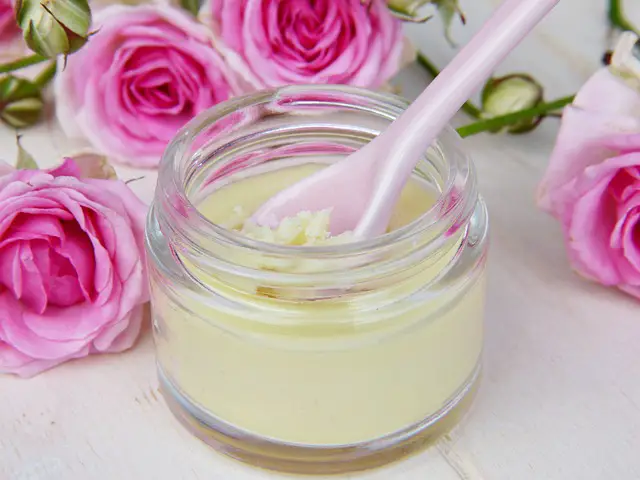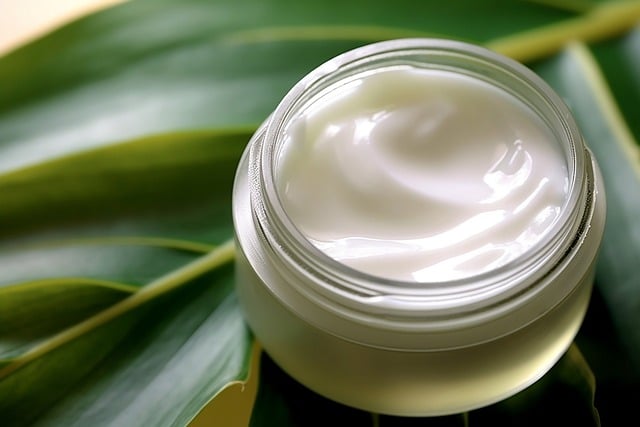Peptides work at a cellular level to promote healthy skin regeneration, while ceramides act as natural lipids that protect against moisture loss and environmental damage.
TL;DR Peptides Vs. Ceramides
Peptides are short chains of amino acids, essential for protein synthesis and promoting skin elasticity. In skincare, peptides contribute to anti-aging benefits by supporting collagen production.
Ceramides are lipid molecules in the skin’s barrier, preventing moisture loss. They enhance skin hydration and protect against environmental stressors. While peptides focus on protein synthesis, ceramides play a crucial role in maintaining skin barrier function and moisture balance.
What are Peptides?

Peptides are tiny protein molecules consisting of amino acids, the building blocks of our skin. They play a crucial role in various biological processes and have gained significant attention in the skincare industry. These powerful little compounds act as messengers, signaling our skin cells to perform specific functions.
One fascinating aspect of peptides is their ability to stimulate collagen production. Collagen is responsible for maintaining the structure and elasticity of our skin, but its production naturally declines with age. By incorporating peptides into your skincare routine, you can potentially boost collagen levels and reduce the appearance of fine lines and wrinkles.
Moreover, different types of peptides target specific skin concerns. For instance, some peptides are known for their moisturizing properties, helping to improve hydration levels and combat dryness. Others focus on reducing inflammation or brightening dull complexions.
Interestingly enough, peptide formulations can penetrate deep into the layers of your skin due to their small size. This means they have a higher chance of reaching targeted areas where they can exert their beneficial effects.
What are Ceramides?

Ceramides are naturally occurring lipids that play a crucial role in maintaining the health and integrity of our skin. These lipids are a vital component of the skin’s barrier function, helping to prevent moisture loss and protect against external irritants.
In simpler terms, ceramides act as the glue that holds our skin cells together, forming a protective barrier on the surface. Without sufficient levels of ceramides, our skin becomes more susceptible to dryness, irritation, and signs of aging.
One interesting aspect of ceramides is that they can be found not only in our own bodies but also in various skincare products. When applied topically, ceramide-infused products help replenish and reinforce the natural lipid barrier within our skin. This can result in increased hydration, improved elasticity, and an overall healthier complexion.
It’s worth noting that as we age or expose ourselves to harsh environmental factors like excessive sun exposure or pollution, our natural ceramide levels tend to decline. This is why incorporating skincare products containing ceramides into your routine can be beneficial for restoring moisture balance and promoting optimal skin health.
Peptides Vs. Ceramides – Key differences
| Criteria | Peptides | Ceramides |
|---|---|---|
| Molecular Structure | Short chains of amino acids | Lipid molecules |
| Function in the Skin | Support protein synthesis, collagen production | Integral to the skin's barrier, prevent moisture loss |
| Role in Skincare | Anti-aging benefits, enhance skin elasticity | Enhance skin hydration, protect against environmental stressors |
| Moisture Retention | Limited direct role in moisture retention | Critical for maintaining skin barrier function, prevent dehydration |
| Application in Skincare | Commonly found in anti-aging products, promote skin firmness | Used in moisturizers and barrier repair products for hydration and protection |
| Impact on Texture | Often contributes to lightweight, easily absorbed formulations | Contributes to the skin's lipid structure, offering a smoother texture |
| Primary Concerns | Focus on addressing signs of aging, fine lines, and wrinkles | Address concerns related to dryness, dehydration, and compromised skin barrier |
How Ceramides Help Improve Skin Health and Appearance
Ceramides play a vital role in improving skin health and appearance through the following mechanisms:
Maintaining Skin Barrier:
Ceramides are a crucial component of the skin’s lipid barrier, forming a protective layer that prevents moisture loss and shields the skin from external stressors. This barrier function is essential for maintaining optimal hydration levels, preventing dryness, and protecting against environmental irritants.
Enhancing Hydration:
Ceramides contribute to the retention of water in the skin, helping to keep it plump, smooth, and well-hydrated. By reinforcing the skin’s natural moisture barrier, ceramides reduce transepidermal water loss (TEWL) and improve the overall moisture balance, addressing concerns related to dryness and dehydration.
Supporting Healthy Skin:
Ceramides are involved in cell signaling, regulating various cellular processes that contribute to overall skin health. By supporting cell turnover and promoting a balanced skin environment, ceramides contribute to a smoother skin texture, improved elasticity, and a more youthful appearance.
Protection Against Irritants:
The lipid barrier formed by ceramides acts as a protective shield, helping to prevent the penetration of harmful substances and irritants into the skin. This protection is essential for individuals with sensitive or compromised skin, as it helps maintain skin integrity and reduces the risk of inflammation.
Addressing Skin Conditions:
Ceramide-rich skincare products are often recommended for individuals with conditions such as eczema or dermatitis, where the skin’s natural barrier is compromised. Applying ceramides can help repair and strengthen the skin barrier, alleviating symptoms and promoting overall skin health.
Incorporating skincare products with ceramides, such as moisturizers and barrier repair formulations, can be beneficial for individuals looking to improve skin hydration, texture, and resilience.
Image Credits
Featured Image By – Adeelch from Pixabay
Image 1 By – Silvia from Pixabay
Image 2 By – Aesthetic Journey from Pixabay









